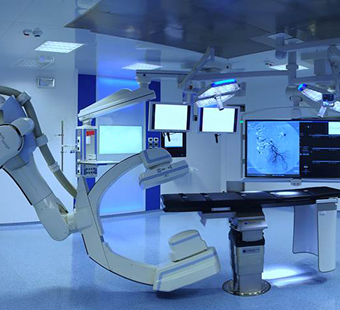
Since the advent of the photograph in 1839, pictures have become the overwhelmingly preferred means of communication. Today, anyone with a smartphone can take higher quality photos than were available even a decade ago with expensive, professional equipment. And what are people doing with their photos? Sharing them via social media on Facebook, Twitter, Instagram, Pinterest and Snapchat.


The explosive growth of photo-sharing isn’t surprising when posts with photos get 53% more likes and 104% more comments than pic-less posts. The ability of images to attract and engage is astonishing and demands a shift in how we reach potential patients. Many clinics have already realized the power of photographs (they are worth a thousand words, after all) but don’t have the understanding to leverage them appropriately. In this article we walk you through the top three things that will help you use your photo gallery to drive clients and increase revenue.
Improve Your Photo Quality
It should be obvious that good pictures are better than bad ones, but for the aesthetic industry, quality is more than important – it’s essential. Why? Because you’re selling a product that’s all about visual appeal. If you have poor quality photos, how will potential clients interpret the quality of your work? (Hint, the answer is “poor.”)
With all the advances in phone and tablet cameras, anyone can take professional-quality photos at any time. To prove that point, Apple launched a 2015 ad campaign that featured crowdsources photos snapped by iPhone users around the world. The ability to take beautiful pictures is so commonplace that it’s shifted the expectation on businesses. As professionals, you have to up the quality of your work to attract consumers.

So what does it mean to have “quality” photos in your before and after gallery? Because your clients are sophisticated and discerning, you have to pay careful attention to:
- Lighting: make sure your lighting is even and devoid of any shadows
- Composition: before and after photos should show the work head-on, not angled downward or upward toward a body part
- Comparison: side-by-side versions of before and after procedures should be as closely mirrored as possible with the same angle, lighting, and distance from the subject
- Consistency: photos of the same procedure on different patients should also be shot from the same angle, lighting and distance from the subject
- Filters: While filters are popular on social sites like Instagram, they have no place in professional clinical photography
- Packaging: your photos should be clean and simple, without distracting captions or text interfering with the subject matter
Make Your Photos Relevant to Your Target Demographic
It’s important that the demographic makeup of your photo gallery is consistent with the customers you are trying to attract. If a potential patient can’t visualize herself because you don’t represent her ethnicity, you’re less likely to get a new customer. You should also be aware of the trends about cosmetic surgery patients. According to the American Society of Plastic Surgeons:

92% of all cosmetic procedures are performed on women

Cosmetic procedures on Latin and African-American ethnic groups grew 3x more than those of Caucasians and Asian-Americans in 2015

Men account for more than 40% of all aesthetic breast reduction surgeries
Just as important as general trends in the industry, you should be aware of the composition of ethnicity, age and gender of your region and how it differs from the general population. To maximize your pool of potential patients, pictures should include commensurate proportions of gender, ethnic groups, and age groups by procedure and geographic location.
Ultimately the more variety you include in your gallery the better. The American Society for Aesthetic Plastic Surgery includes an excellent and detailed statistics report that includes a breakdown of procedure performed, age, gender and ethnicity by region: a helpful tool as you work to build your photo gallery.
Promote your Brand Through Your Gallery
Too many clinics simply post before and after pictures without proper attention to establishing and promoting their brand. When you build a before and after gallery, consider the following:
- Humanize yourself and staff:
Remember, patients aren’t just choosing a procedure, they’re choosing a provider and an office staff who will accompany them on their journey. They need to see that you’re professional, friendly and approachable. - Carry your atmosphere through to your website:
You work hard to create a certain atmosphere in your office – whether it’s ultra-modern or spa-like, a patient should feel that while browsing your before and after gallery as well. - Make the patient feel comfortable:
Add whatever photos you think might help make a potential patient more comfortable choosing you, whether it’s pictures of your waiting room or the equipment that you use.
We live in a visually rich world full of pictures and videos. Your photo gallery is often the determining factor in whether a patient chooses your clinic, so make sure your photo gallery is optimized to attract clients with these three tips.
Are you struggling to take high-quality and consistent before and after photos?
Check out our whitepaper on

Emily Alten
Writing enthusiast and biology nerd, Emily specializes in educational healthcare and medicine content. She is a Magna Cum Laude graduate from Columbia University with a degree in biological sciences/pre-medical studies.
How much should you spend on medical photography equipment?Without a doubt, your office needs to take photos of your patients on a daily basis. Whether you’re building a before and…
Ever wonder why you call your clients “patients”? Turns out, the etymology of the word stems from a Latin word that means “enduring, or suffering, without complaint”. And this quiet…
Before and after photos, as well as photos used to document patient procedures are considered PHI (Protected Health Information) by HIPAA, regardless of whether or not clients are using health…


